不就是Java吗之数据类型与变量
Hello,各位。这个专栏,我会帮助大家通过简单易懂的方式学习,学懂,学精Java这门编程语言!欢迎大家与我积极探讨Java以及其他的知识。
?wechat:Kepler-Antonia
?QQ:162196770
?gitee: https://gitee.com/jialebihaitao
?上一篇文章:https://blog.csdn.net/m0_53117341/article/details/123307420
?文章专栏:https://blog.csdn.net/m0_53117341/category_11551619.html
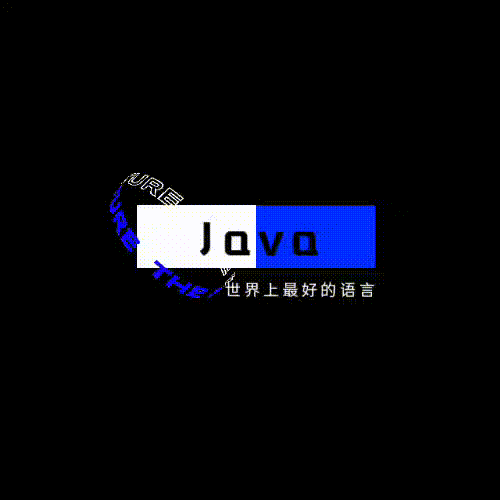
1、字面常量
1.1 常量的概念
常量即程序运行期间,固定不变的量称为常量
1.2 分类
- 字符串常量:
"12345" - 整形常量:
316 - 浮点数常量:
3.14 - 字符常量:
‘a’ - 布尔常量:
true/false - 空常量:
null(注意:小写的null)
2、数据类型
2.1 分类:
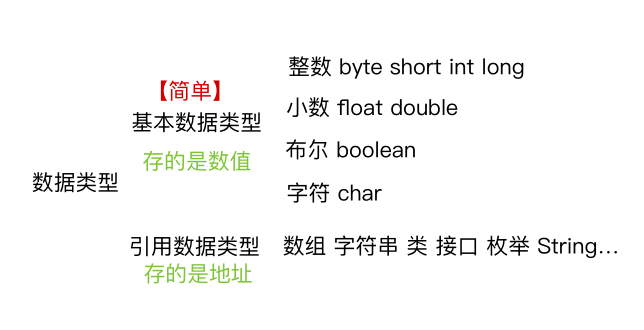
注意:string不是基本的数据类型
2.2 它们的大小
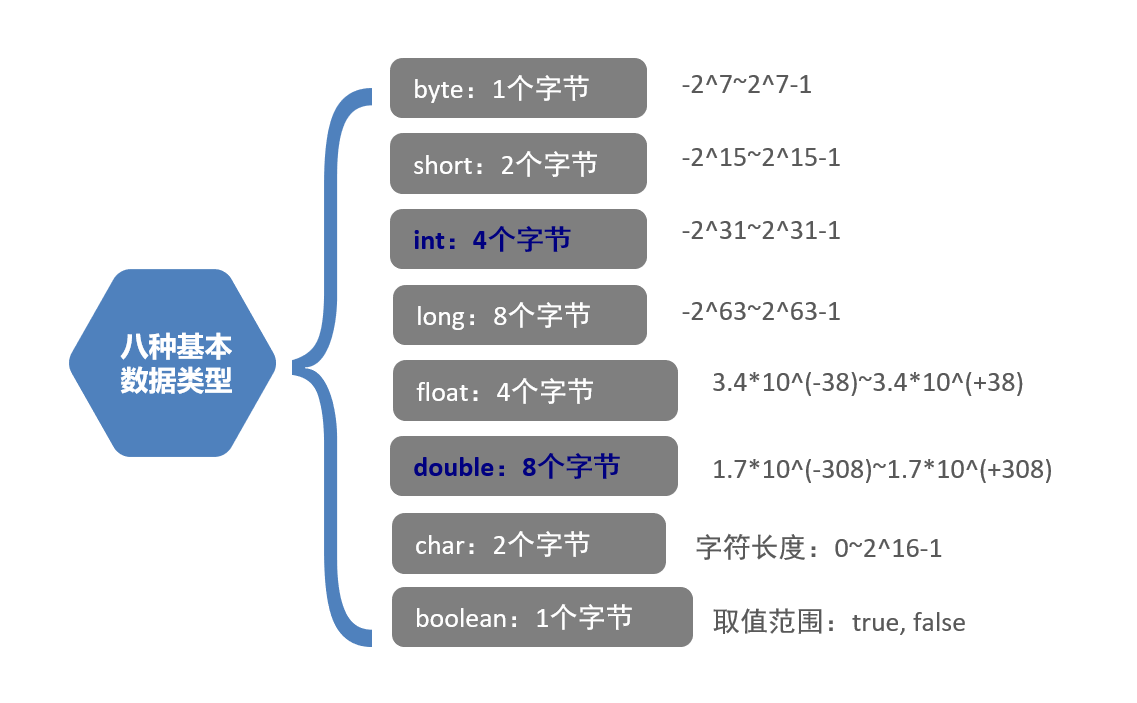
注意:
- 不论是在16位系统还是32位系统,int都占用4个字节,long都占8个字节
- 整形和浮点型都是带有符号的
- 整型默认为int型,浮点型默认为double
2.2.1 计算机存储数据的形式
计算机中最小的存储单元是字节(Byte,通常用B表示),每个字节包含8个位(bit,又叫“比特位”通常用b表示,值为0或1)。
- 1Byte = 8bit
- 1KB = 1024B
- 1MB = 1024KB
- 1GB = 1024MB
- 1TB = 1024GB
2.2.2局部变量和成员变量
- 局部变量:?法内部的变量
- 成员变量:我们在类和方法会讲到
举个栗子:
public class Demo1 {
public static void main(String[] args) {
//快捷键:psvm(main)-主函数
//快捷键:sout-输出语句
System.out.println("欢迎你来看我的博客!");
}
}
3、变量
3.1 概念
在程序执行的过程中,其值可以在某个范围内发生改变的量。
3.2 本质
内存中的一小块区域
3.3 定义格式
数据类型 变量名 = 初始化值;
举个栗子:
public class Demo2 {
public static void main(String[] args) {
int a = 10;
double d = 3.14;
char ch = 'A';
boolean b = true;
System.out.println(a);
System.out.println(d);
System.out.println(ch);
System.out.println(b);
}
}
3.4 整型变量
3.4.1 整型
- 错误定义:
public class Demo3 {
public static void main(String[] args) {
int a;//err:报错
System.out.println(a);
}
}
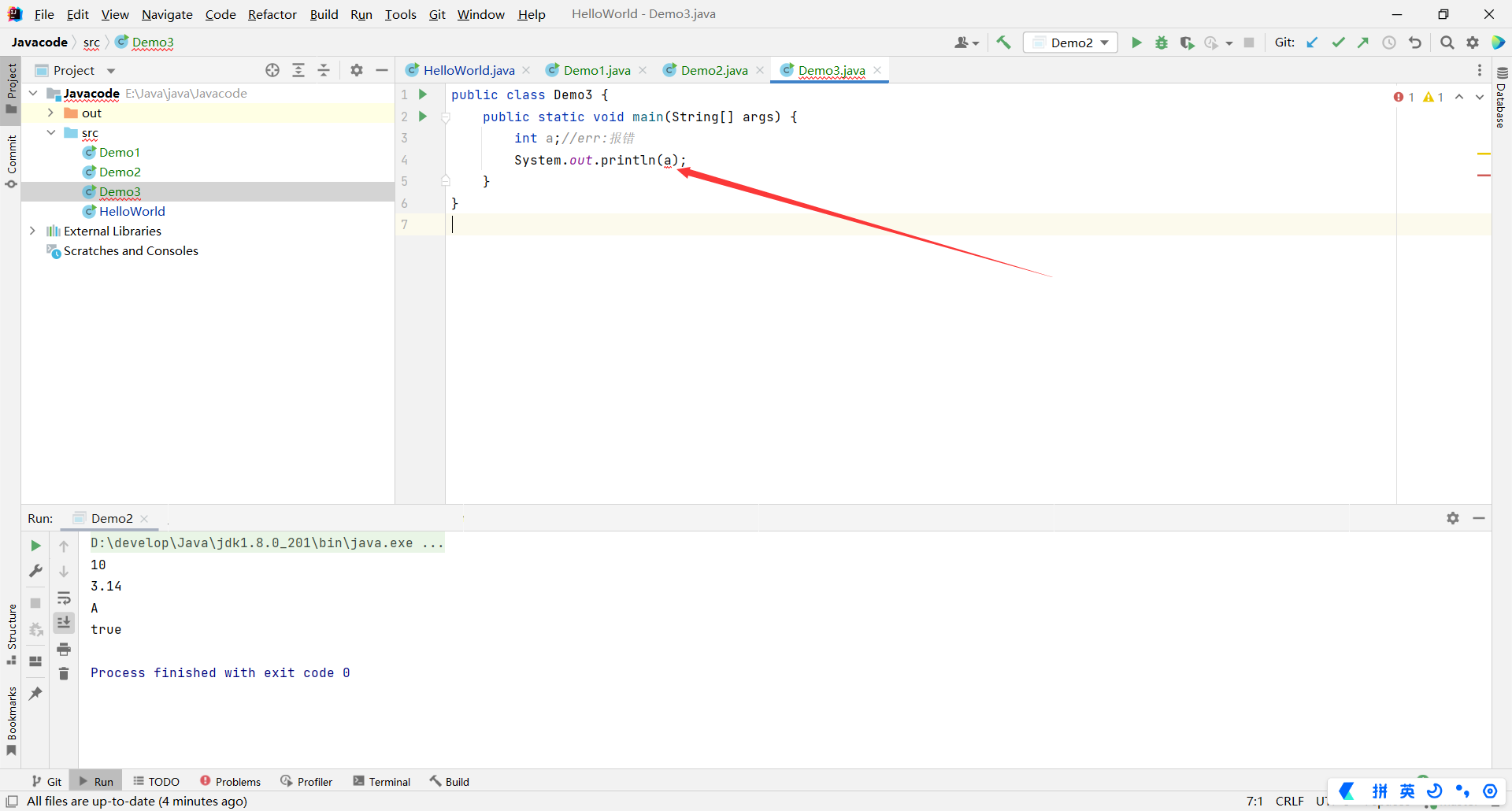
- 正确定义方法:
public class Demo3 {
public static void main(String[] args) {
//方法一:在定义时给出初始值
int a = 10;
System.out.println(a);
//方法二:先定义变量,再给予初值
int b;
b = 10;
System.out.println(b);
}
}
- 整型所能表达的范围:
public class Demo4 {
public static void main(String[] args) {
System.out.println(Integer.MAX_VALUE);//2147483647
System.out.println(Integer.MIN_VALUE);//-2147483648
}
}
//这里出现的概念:包装类
//基本数据类型 所对应的 类类型
//int->Integer[可以当成int的加强版本]
-
int的大小:

3.4.2 长整型
-
正确定义:
public class longDemo { public static void main(String[] args) { long a = 10; //推荐:为了能够区分出来int long 类型,long类型后面会加上L/l,我们推荐加大写的L,以便区分 long b = 10L; long c = 10l; } } -
数据范围:
-2^63~2^63-1public class longDemo { public static void main(String[] args) { long a = 10; //推荐:为了能够区分出来int long 类型,long类型后面会加上L/l,我们推荐加大写的L,以便区分 long b = 10L; long c = 10l; System.out.println(Long.MAX_VALUE);//9223372036854775807 System.out.println(Long.MIN_VALUE);//-9223372036854775808 } } //long数据类型的包装类是Long
3.4.3 短整型
-
正确定义
public class shortDemo { public static void main(String[] args) { short sh = 10; System.out.println(sh); } } -
数据范围
public class shortDemo { public static void main(String[] args) { System.out.println(Short.MAX_VALUE);//32767 System.out.println(Short.MIN_VALUE);//-32768 } } //包装类:Short -
利用包装类也可以创建变量(以后具体讲)
public class shortDemo { public static void main(String[] args) { Short sh1 = 20; System.out.println(sh1); } }
3.4.4 字节型(C语言未出现过的)
-
正确定义
public class byteDemo { public static void main(String[] args) { byte b1 = 124; System.out.println(b1); } } -
表示范围(重点):
-128~+127public class byteDemo { public static void main(String[] args) { System.out.println(Byte.MAX_VALUE);//127 System.out.println(Byte.MIN_VALUE);//-128 } } //包装类:Byte那这样的话,我们就要格外的注意一下对于byte类型的变量的赋值了,不要超出byte的数据范围。
public class byteDemo { public static void main(String[] args) { byte b1 = 128;//err:超出了byte所能表达的范围 System.out.println(b1); } }为了方便理解,我们可以看这张图:
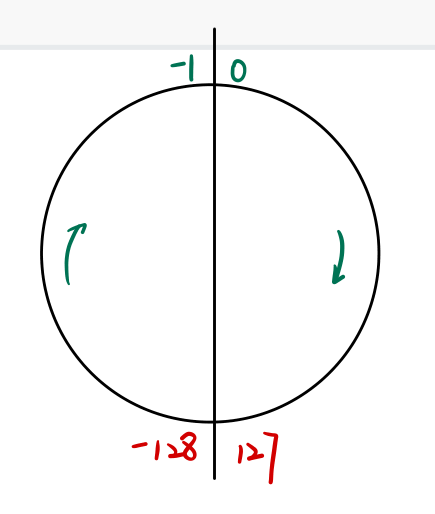
3.5 浮点型变量
3.5.1 双精度浮点型数据
-
正确使用:
public class doubleDemo { public static void main(String[] args) { double d1=3.14; System.out.println(d1); } } -
注意事项:
-
会输出0.5吗?
public class doubleDemo { public static void main(String[] args) { int a = 1; int b = 2; System.out.println(1 / 2); } }答案是不会!
在Java中,int除以int的值依然是int(会把小数部分舍弃掉)。想要得到小数,需要使用double类型计算
public class doubleDemo { public static void main(String[] args) { double a = 1.0; double b = 2.0; System.out.println(a / b); } }或者这样
public class doubleDemo { public static void main(String[] args) { int a = 1; int b = 2; System.out.println(a * 1.0 / b);//0.5 } } -
会输出1.21吗?
public class doubleDemo { public static void main(String[] args) { double num = 1.1; System.out.println(num * num); } }我们看输出结果:
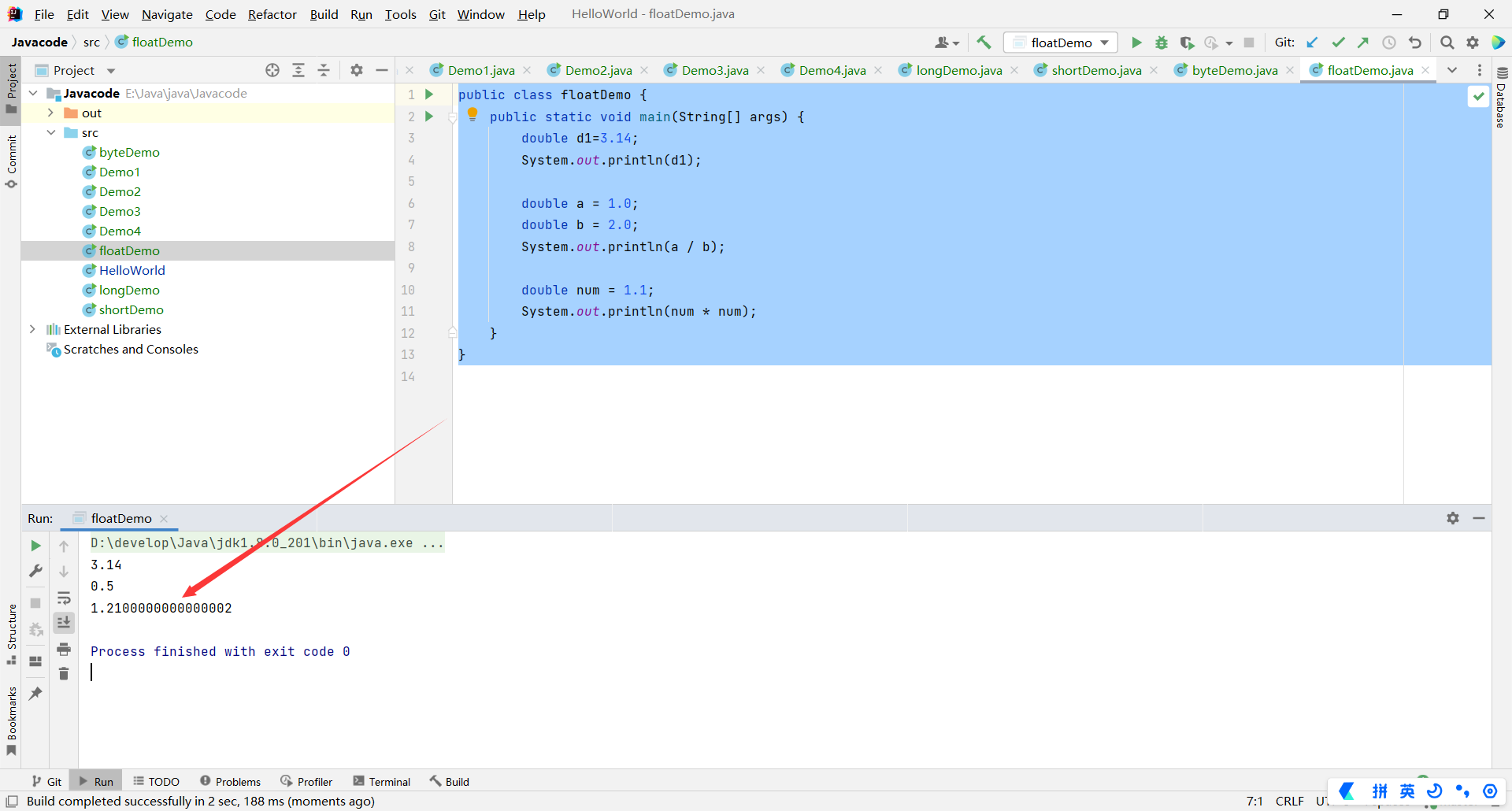
实际上,对于?数,是没有?个精确的数字,只能精确到?数点后?位。
-
-
表示范围:
public class doubleDemo { public static void main(String[] args) { double d1=3.14; System.out.println(d1); double a = 1.0; double b = 2.0; System.out.println(a / b); double num = 1.1; System.out.println(num * num); System.out.println(Double.MAX_VALUE);//1.7976931348623157E308 System.out.println(Double.MIN_VALUE);//4.9E-324 } } //我们可以看到,double类型的最大值 最小值已经出现了科学计算法形式,实际上,我们是不太关心浮点型数据所能表达的数据范围的 //double的包装类是Double
3.5.2 单精度浮点型数据
-
正确写法
public class floatDemo { public static void main(String[] args) { float f1 = 1.0f; float f2 = 1.0F; } } -
数据范围:
public class floatDemo { public static void main(String[] args) { float f1 = 1.0f; float f2 = 1.0F; System.out.println(Float.MAX_VALUE);//3.4028235E38 System.out.println(Float.MIN_VALUE);//1.4E-45 } } //float的包装类是Float -
?oat 类型在 Java 中占四个字节, 同样遵守 IEEE 754 标准. 由于表示的数据精度范围较小, 一般在工程上用到浮点数都
优先考虑 double, 不太推荐使用 ?oat.
3.6 字符变量
-
正确使用:
public class charDemo { public static void main(String[] args) { char ch = '帅';//字符数据类型,Java中的char是两个字节 System.out.println(ch); } } //一个中文是两个字节 -
注意事项:char数据类型不能存放负数
public class charDemo { public static void main(String[] args) { char ch1 = -100;//err } }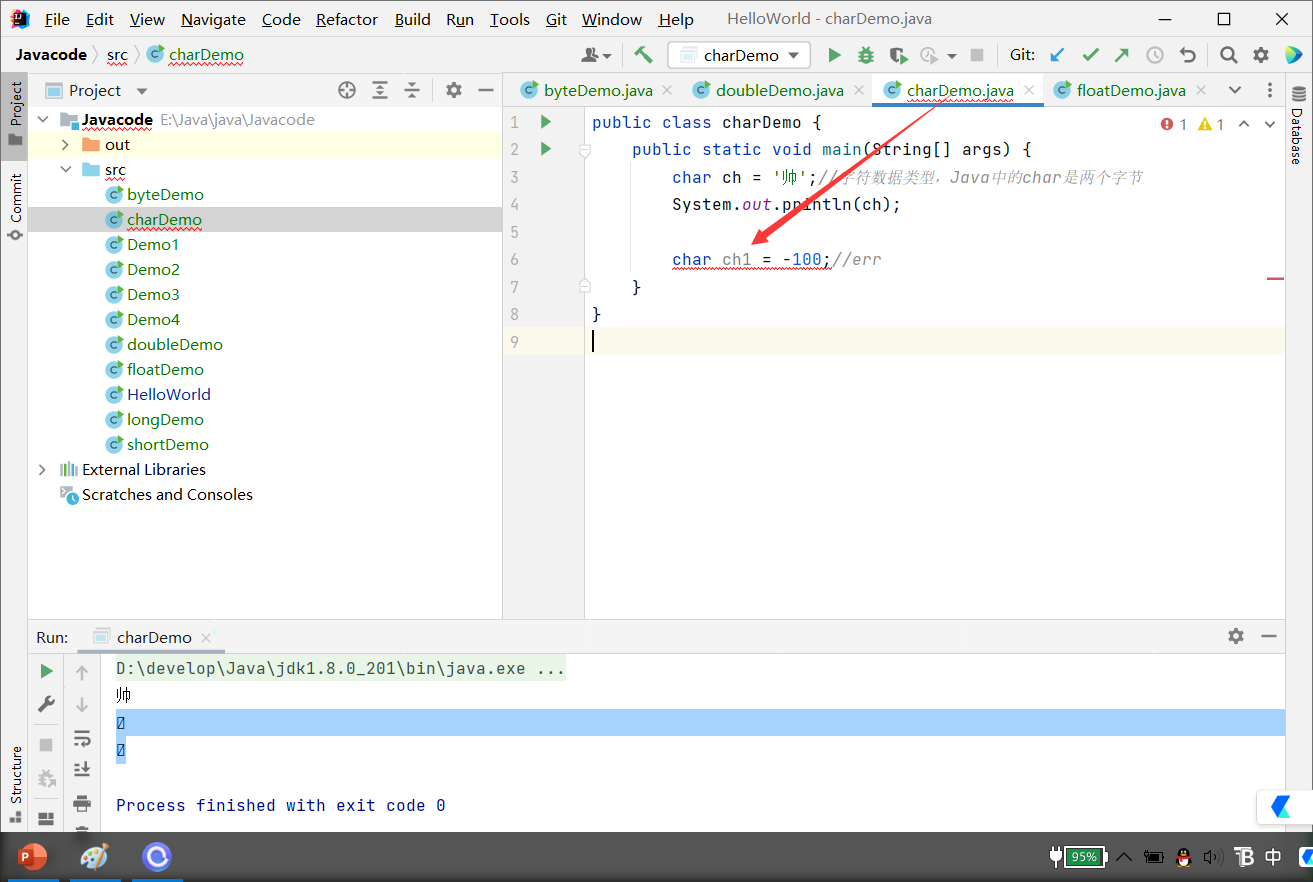
3.7 布尔型变量
-
使用:只有true和false两个取值
public class boolDemo { public static void main(String[] args) { boolean flg = true; System.out.println(flg); } } -
错误使用:
public class boolDemo { public static void main(String[] args) { //错误写法1 boolean flg1 = 1;//err:boolean中只有true/false //错误写法2 int a = 1; if(a)//err:()里面应该是布尔类型的值 //正确写法 if(a!=0) { System.out.println("正确写法"); } } } -
boolean的包装类是Boolean
-
boolean的大小:在JVM中,没有明确给定??(有些书上,1bit/1byte),但是说布尔数组会被JVM识别为字节数组,数组中每个布尔元素是8位->1个字节
在选择题中,所谓的?个boolean占1个字节/1个?特位
3.8 类型转换
在Java中,当参与运算数据类型不一致时,就会进行类型转换。Java中类型转换主要分为两类:自动类型转换( 隐式)
和强制类型转换(显式)。
3.8.1 自动类型转换
-
特点:数据范围小的转为数据范围大的时会自动进行。
-
举个栗子:
public class typeConversion { public static void main(String[] args) { int a = 10; long b = 10L; a = b;//err:编译报错,long的范围比int范围大,会有数据丢失,不安全 b = a;//right:a和b都是整形,a的范围小,b的范围大,当将a赋值给b时,编译器会自动将a提升为long类型,然后赋值 } }
3.8.2 强制类型转换(显式)
-
特点:数据范围大的到数据范围小的。
-
举个栗子:
public class typeConversion { public static void main(String[] args) { int a = 10; long b = 100L; b = a; // int-->long,数据范围由小到大,隐式转换 a = (int)b; // long-->int, 数据范围由大到小,需要强转,否则编译失败 } }
3.9 数据提升
不同类型的数据之间相互运算时,数据类型小的会被提升到数据类型大的。

-
int->long:
public class dataImprove { public static void main(String[] args) { int a = 10; long b = 20; //int c = a + b;//编译出错:a+b->int+long->long+long赋值给int会丢失数据 //正确写法 int c = (int)(a+b); long d = a + b;//编译成功:a+b->int+long->long+long赋值给long } }public class dataImprove { public static void main(String[] args) { int a = 10; long b = 10L; a = (int)b; //b = a; } } -
byte<->byte:
public class dataImprove { public static void main(String[] args) { byte b1 = 30; byte b2 =20; //byte b3 = b1 + b2; //正确写法 byte b3 = (byte)(b1 + b2);//所有 ?于4个字节的元素 参与运算的时候 都会提升为4个字节 } }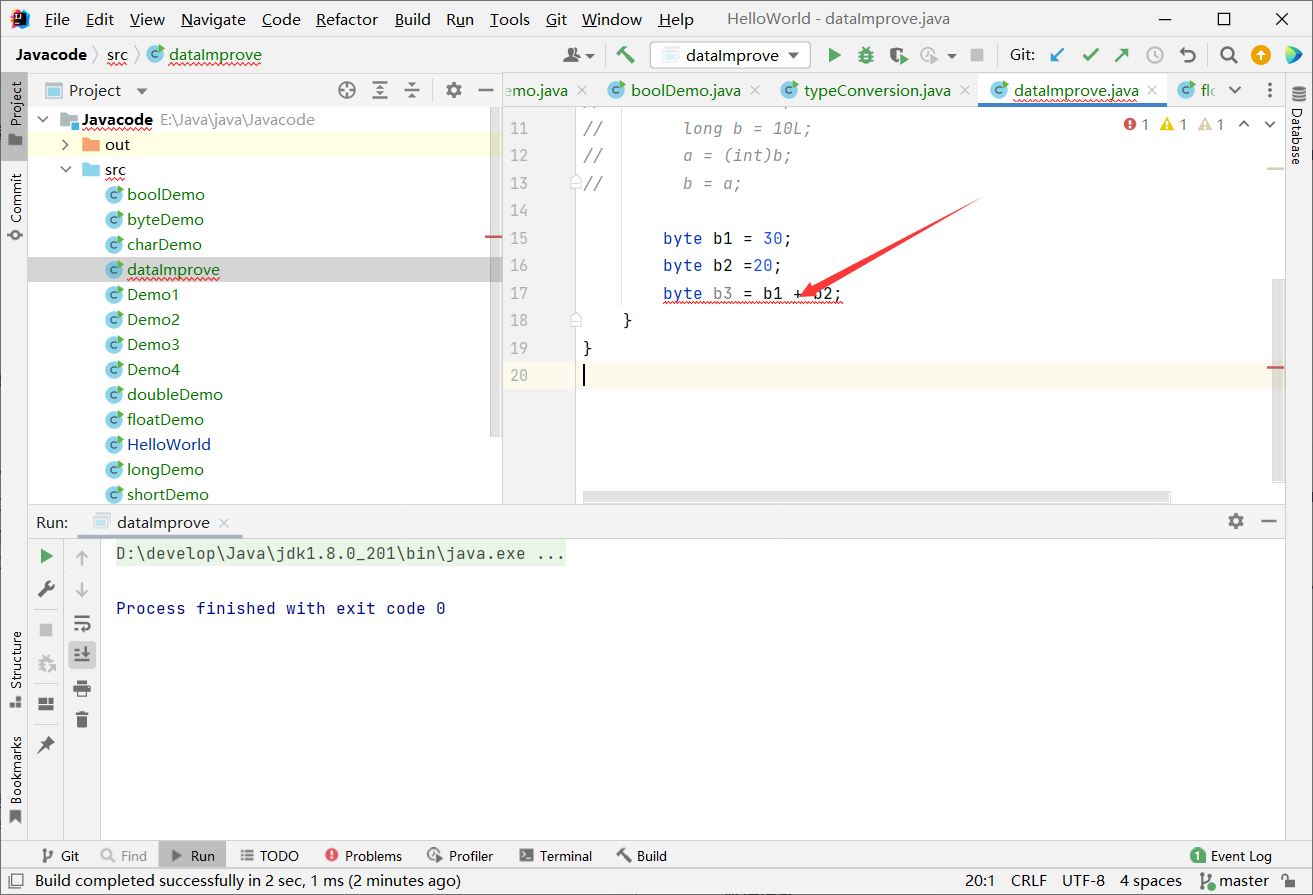
4.字符串类型
在Java中,是存在字符串这个类型的
举个栗子:
public class stringDemo {
public static void main(String[] args) {
String str1 = "您好";
String str2 = "欢迎来看我的博客";
System.out.println(str1+str2);
}
}
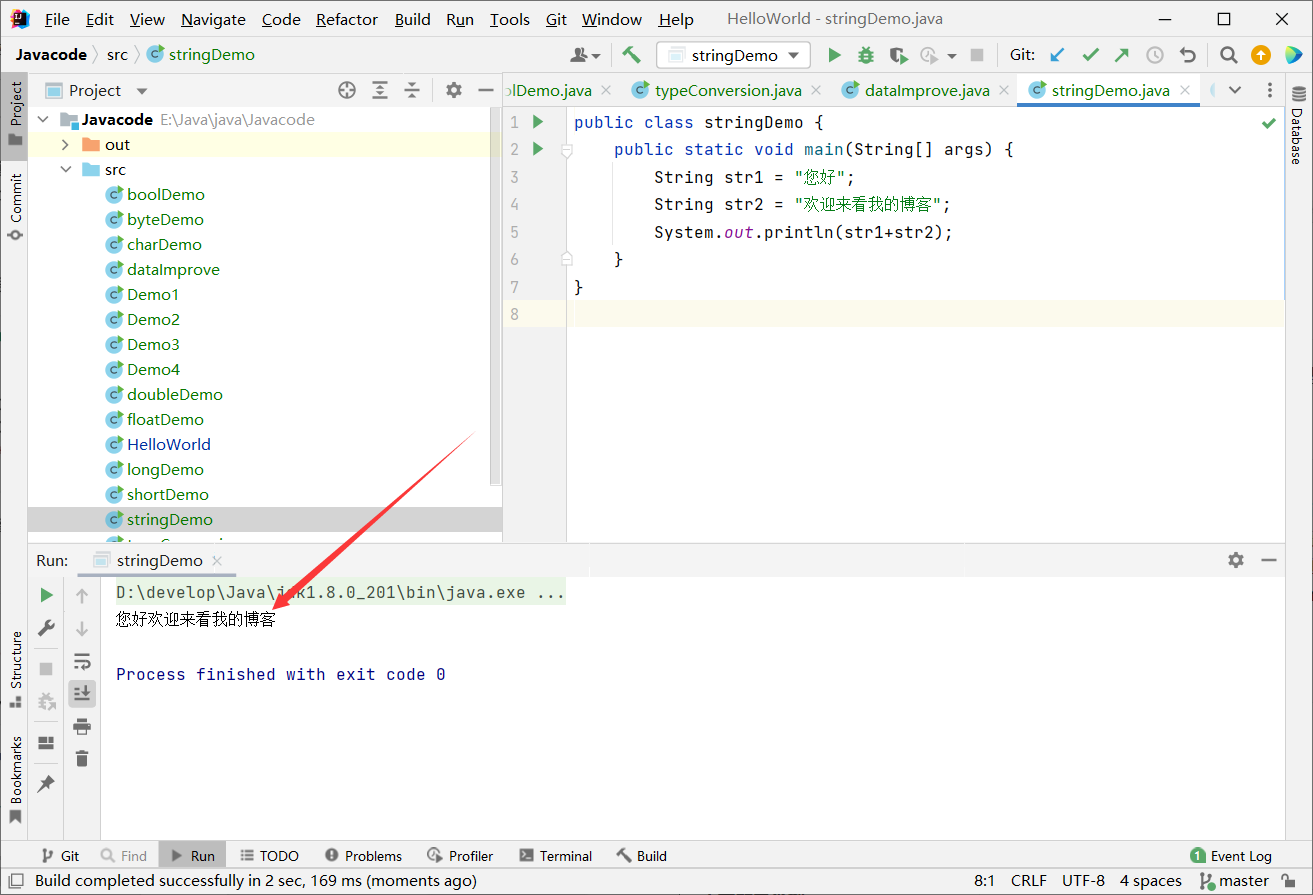
再举个栗子:
public class stringDemo {
public static void main(String[] args) {
int a = 10;
int b = 20;
System.out.println("a="+a+"b="+b);
System.out.println("a+b="+a+b);
System.out.println("a+b="+(a+b));
System.out.println(a+b+"<-a+b");
}
}
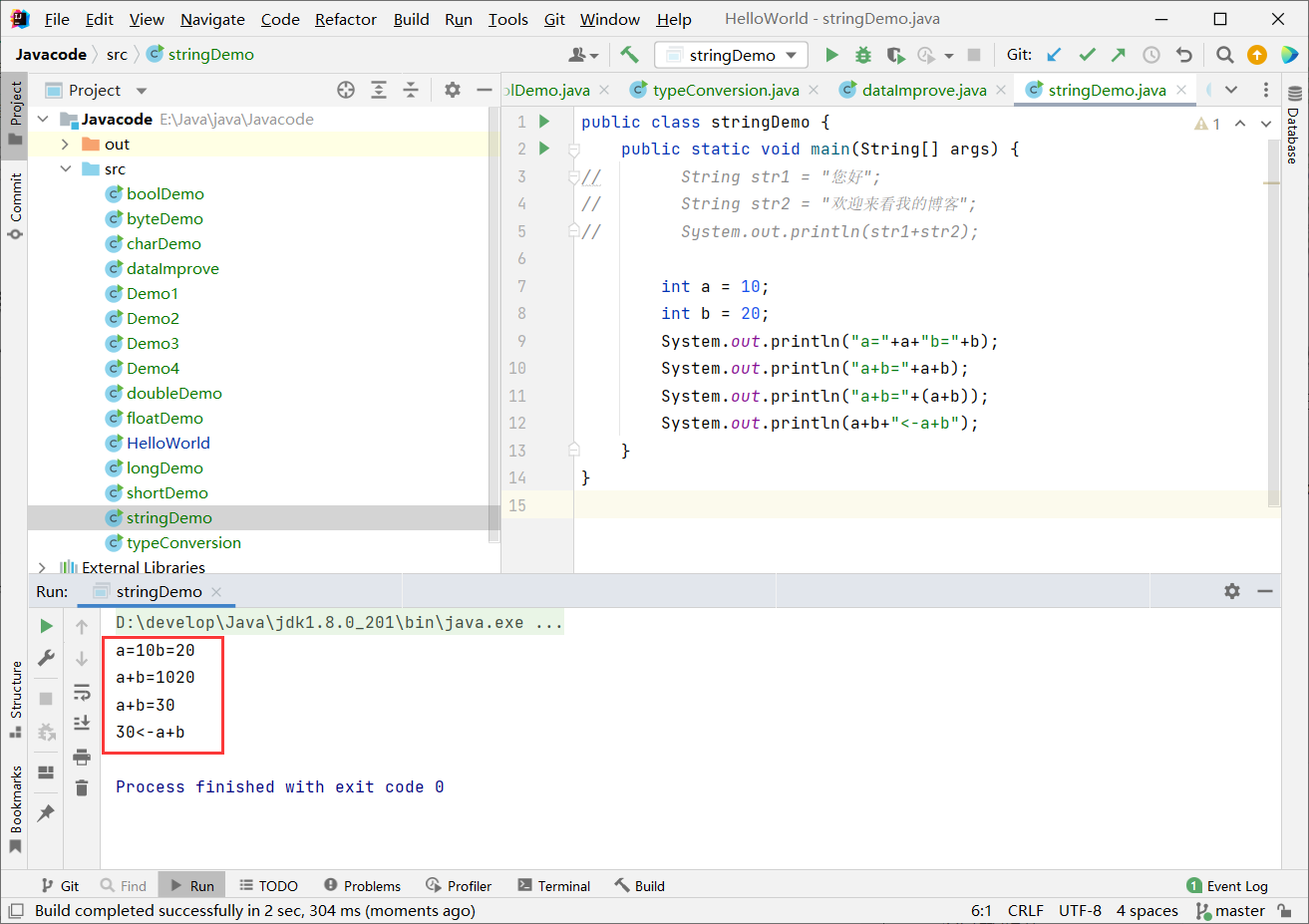
解释一下:只要是跟字符串拼接,结果就是字符串,自上至下,自左至右
那再再举个栗子:
public class stringDemo {
public static void main(String[] args) {
//字符串的加法运算
System.out.println("hello" + "world"); //"helloworld"
System.out.println("hello" + 10); //"hello10"
System.out.println("hello" + 10 + 20); //"hello10" + 20 --> "hello1020"
System.out.println(10 + 20 + "hello"); //30 + "hello" --> "30hello"
}
}
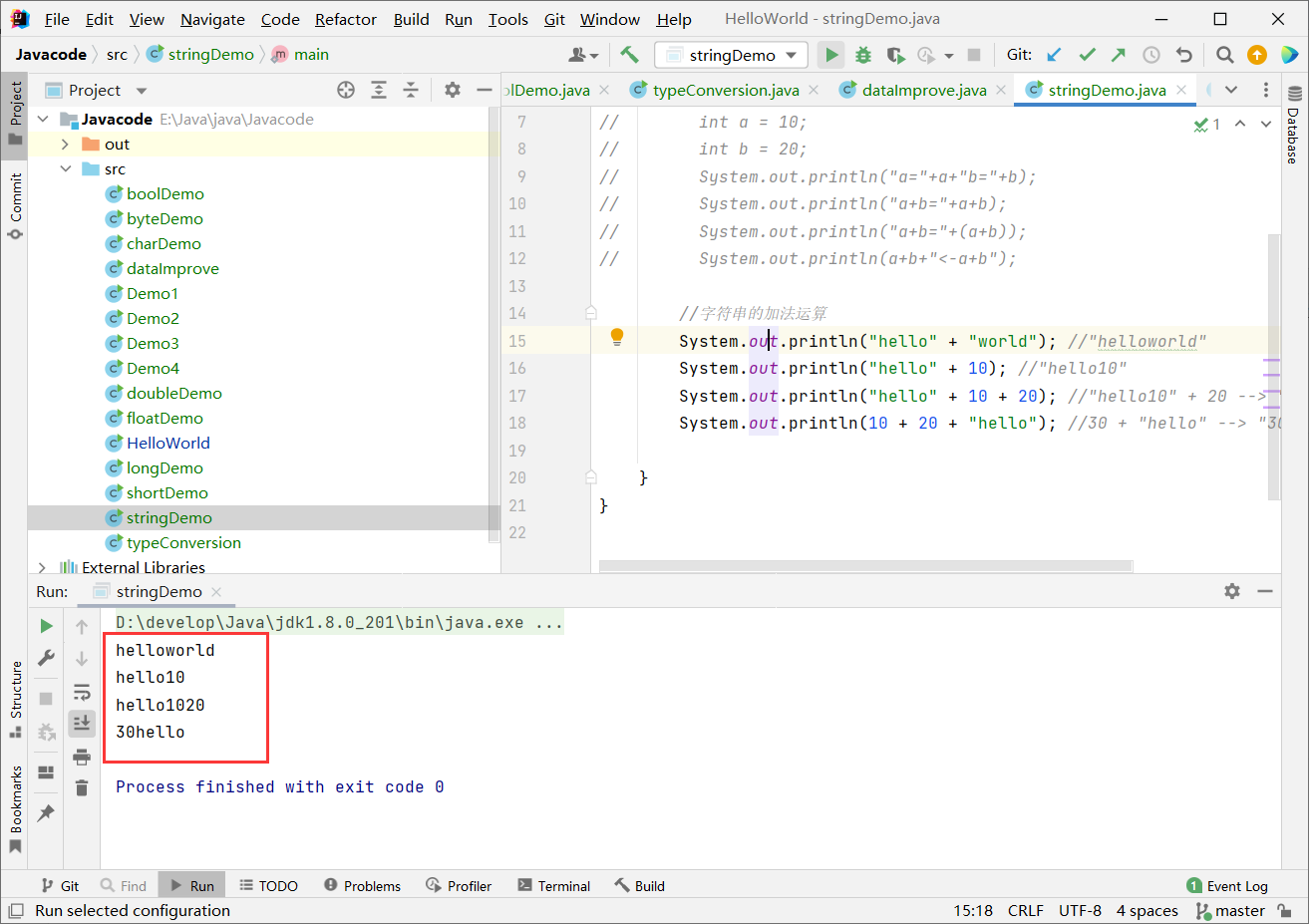
-
整数变字符串
public class stringExchange { public static void main(String[] args) { int num = 10; //方法一 String str1 = num + ""; System.out.println(str1); //方法二 String str2 = String.valueOf(num); System.out.println(str2); } }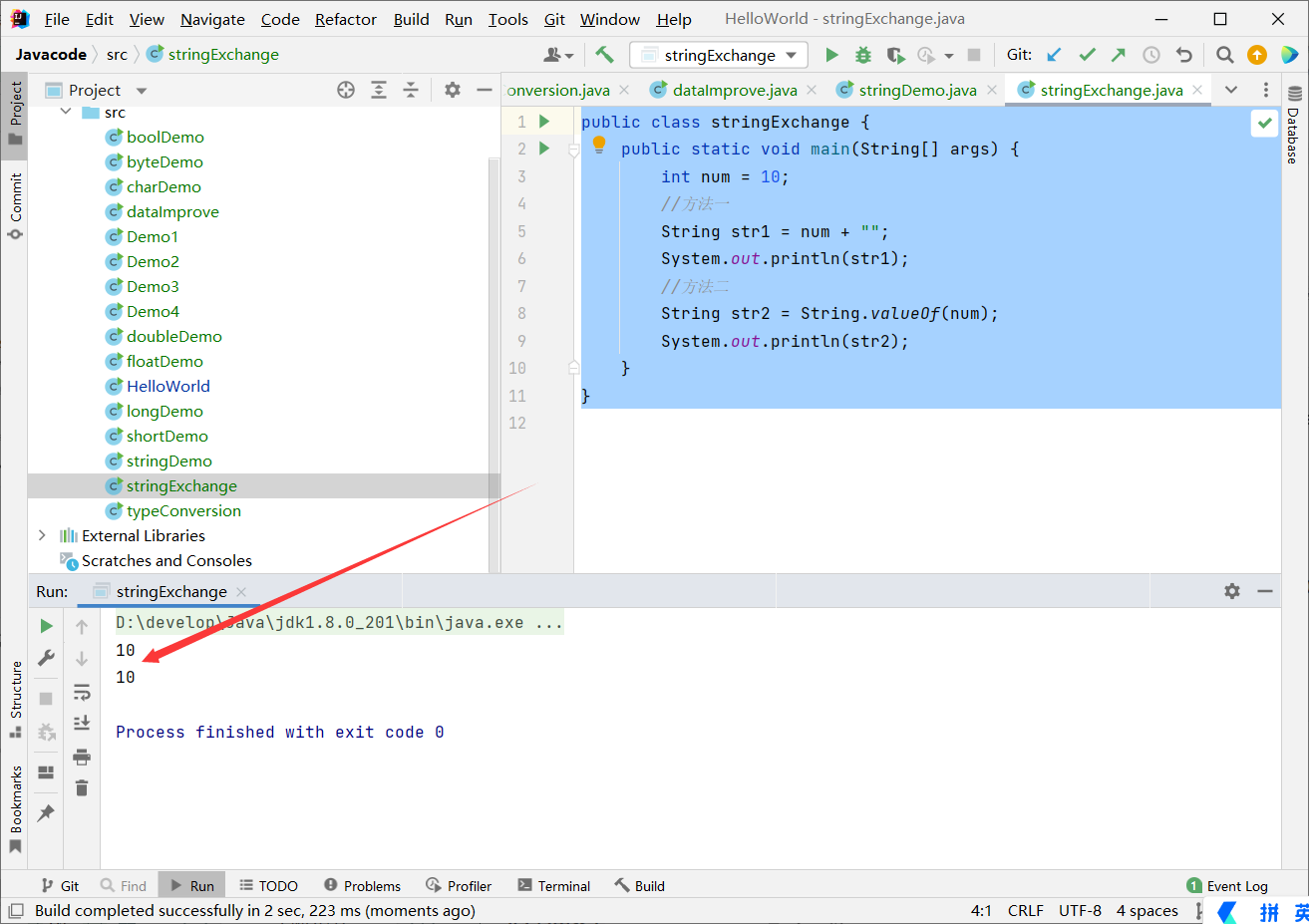
-
字符串变整数
public class stringExchange { public static void main(String[] args) { String str1 = "123"; int a = Integer.valueOf(str1); System.out.println(str1); int b = Integer.parseInt(str1); System.out.println(b); } }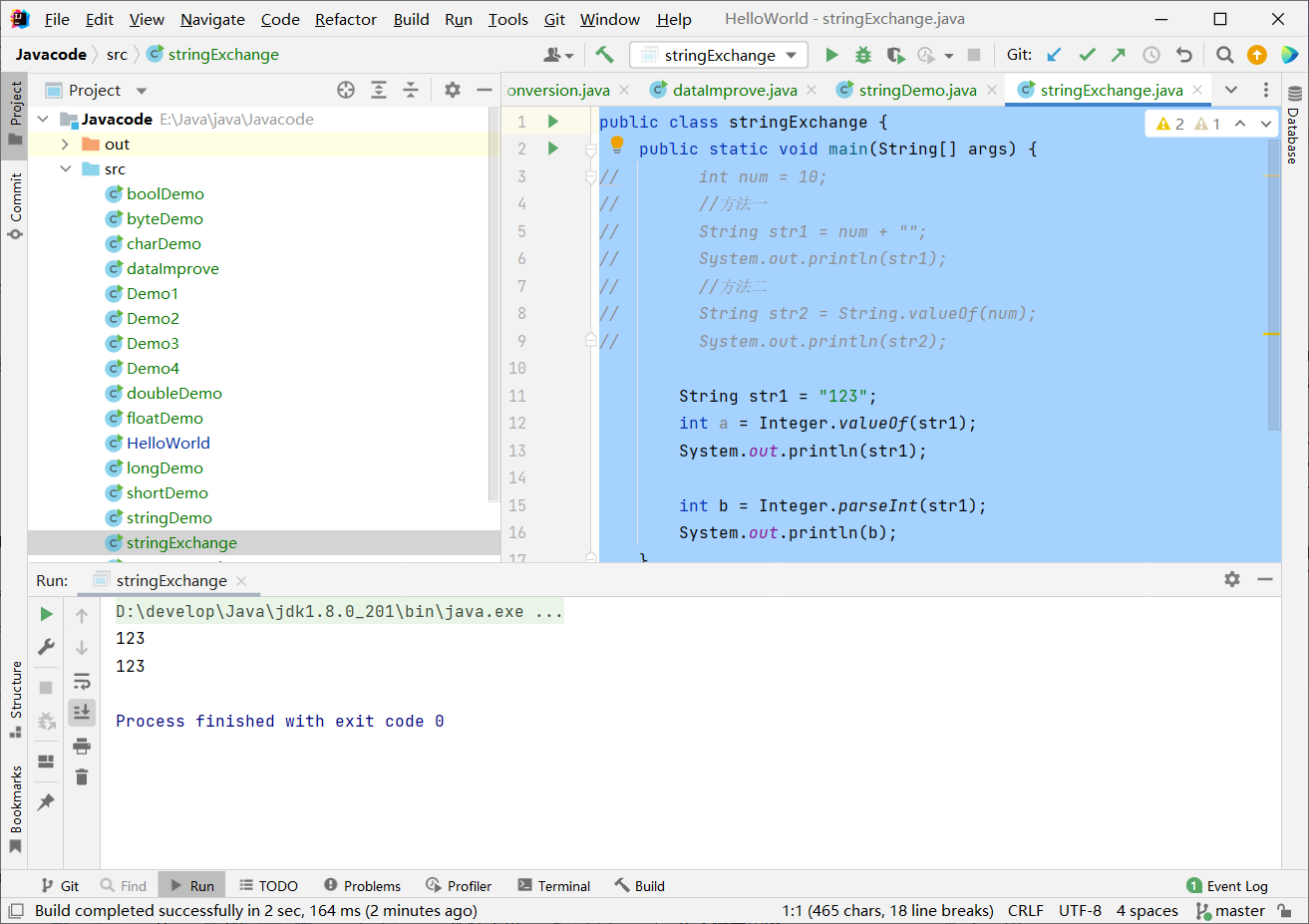
这两个知识点先了解即可,以后会详细讲解的
至此,关于数据类型与变量的相关知识点已介绍完毕。喜欢的话,一键三联熬~
